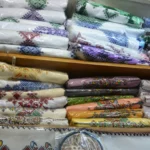
- arrow_back Home
- keyboard_arrow_right Things to Know

What Kind of Food Can I Expect in Morocco, and Is It Safe to Eat Street Food?
Types of Moroccan Food
Moroccan cuisine is a blend of Arab, Berber, Andalusian, and Mediterranean influences, offering rich flavors with spices like cumin, saffron, cinnamon, and ginger. Some popular dishes include:
- Tagine: A slow-cooked stew with meat, vegetables, and spices, served in a clay pot.
- Couscous: Steamed semolina topped with vegetables and meat, often served on Fridays.
- Pastilla: A savory pie filled with spiced meat (usually pigeon or chicken) and dusted with sugar and cinnamon.
- Harira: A traditional soup made with lentils, chickpeas, and tomatoes, often eaten during Ramadan.
- Mechoui: Slow-roasted lamb, typically enjoyed during celebrations.
- Briouates: Small, savory pastries filled with meat or cheese.
- Mint Tea: Known as “Moroccan whiskey,” this sweet tea is a staple at every meal.
Street Food
Moroccan street food offers delicious, affordable, and authentic bites. Popular street foods include:
- Msemen and Beghrir: Moroccan pancakes, served with honey or cheese.
- Bocadillos: Sandwiches filled with meats, eggs, or grilled vegetables.
- Sfenj: A fried doughnut, enjoyed as a snack with tea.
- Grilled Meat Skewers: Lamb, chicken, or beef skewers sold by street vendors.
Is Street Food Safe to Eat?
Yes, street food in Morocco can be safe to eat if you follow a few precautions:
- Choose busy stalls: Opt for vendors with high customer turnover to ensure food is fresh.
- Observe hygiene practices: Look for stalls where food is cooked fresh in front of you.
- Avoid raw foods: Stick to cooked dishes to avoid potential issues with unwashed fruits or salads.
- Bring bottled water: Tap water may not suit everyone, so it’s safer to drink bottled or filtered water.
- Start slow: If you have a sensitive stomach, introduce street food gradually.
Morocco’s cuisine is a key highlight for travelers, offering unique flavors and experiences. Enjoying both traditional meals and street food is a great way to immerse yourself in the local culture!
Search in this site
Categories
-
Latest news
- Marrakech to Merzouga desert tour : The Ultimate Guide
- Discover the Magic of Moroccan Vegetable Tagine 🥕🍅✨
- The Ultimate Guide to Moroccan Wedding Caftans: Traditions, Styles & Modern Trends 👰♀️✨
- Traditional Moroccan Clothing: What to Know 🇲🇦👗✨
- 15 Exciting Things to Do in Safi Morocco: Your Complete Travel Guide 2024 🇲🇦
About us
At Morocco Visitor, we understand that every traveler’s needs are different. That’s why we’ve created a variety of resources to help you tailor your trip to your preferences.
Tips
No results






Be the first to leave a comment